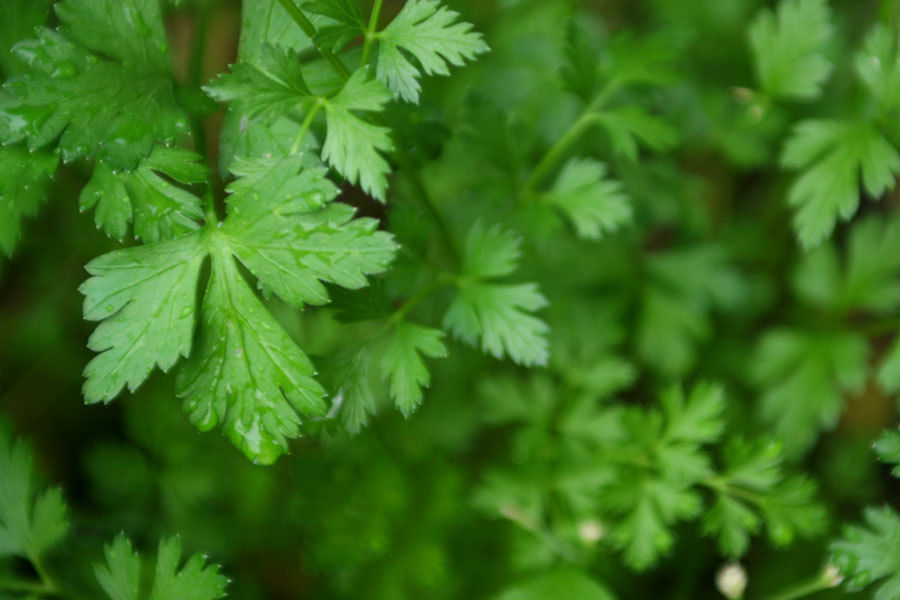top of page

Mid-South Nursery & Greenhouses
Nothing Beats Fresh Herbs!
Gardeners around the world know there's one “not-so-secret” way to add a punch to their garden, of course, it is herbs! Herb gardens are as popular as perennial gardens today. Today growing and using fresh herbs is very common and used in everything from pesto to potpourri. With a sunny and well-drained location, you can add an herb garden to your yardscape and discover your new found love!
General Tips and Info on Herbs
If you are new to growing herbs you may want to start out with some of the easier herbs.
-
Annual herbs include basil, dill and cilantro.
-
Easy perennials include chives, rosemary and thyme.
Herbs in your Arkansas Home Landscape
Consider what herbs you want to grow -- what color are they, when do they bloom, how tall do they grow and are they bushy or spreading in growth habit. Then begin to combine them. If you don't want all herbs, mix them in with traditional landscaping. Take some precautions if mixing in with other plants -- avoid pesticide usage near herbs. With herbs, you are eating entire plant parts, and many have fuzzy or crinkled leaves. Don't plant herbs for culinary uses near pesticide-needy plants.
Although herb plants start out small, they begin to grow, and need space to fill in. When deciding on plant spacing, allow room for continued growth, or interplant with annuals, that won't need the space next season.
Which herbs do we grow?
How many Herbs to Plant?
Deciding how many of each herb you'll need, will depend on how much you will use this herb, and how large the plant will grow. A single mint plant may take care of all of your mint needs and then some, whereas if you use a lot of fresh cilantro in salads and dishes, you'll need to plant several plants to satisfy your needs. If you end up producing too much of one herb, either freeze it or dry it for later use, or share some with a friend.
Harvesting Herbs
The beauty lies in the fact that you don't have to wait months to reap your rewards, since you can start harvesting the day you plant. Snip some off the top and keep doing that all season (unless you are going after seeds) and this will keep the plant spreading out, and give you a continuous supply of fresh herbs. The best time to cut fresh herbs is in the morning after the dew dries, yet before mid day heat hits. If you set off for work too early, you haven't missed out, since you can also harvest in the evening after the sun has set.
Cooking and Eating herbs
Cooking with fresh herbs is a little different than using them dried, so start gradually adding different amounts. Herbs are supposed to complement your food, not completely mask it. Start drying your own herbs for winter usage, or freeze them. If you end up having too many herbs to deal with all at once, you can put the cut herbs in a damp paper towel inside of a plastic bag in the refrigerator for a few days, or freeze them whole. Taller growing herbs can be used in flower arrangements or in a vase of water for a fresh ‘scent' while waiting to be used. But fresh herbs must be used within a few days or they quickly diminish in quality.
Health Benefits of Herbs
Besides cooking with herbs, many gardeners have discovered the health benefits of herbs. Information may be found in numerous resources. Many herbs have antibacterial and antiviral properties and many are high in B-vitamins and trace minerals. Most herbs also contain more disease-fighting antioxidants than fruits and vegetables. Some claim that these herbs are beneficial for the following illnesses:
-
Basil- Digestive disorder
-
Garlic- Boost the immune system, Use for joint relief
-
Dill- Antibacterial/ Upset stomach
-
Mint- Digestive troubles and alleviate nausea
-
Oregano- Aids against some food-borne pathogens, Use as treatment of cough, fever, or congestion
-
Rosemary- Promotes healthy digestion
-
Thyme- Thyme water can be swished around the mouth for gum infections or for the healing of wounds from teeth removal.
-
Peppermint-Upset stomach and indigestion
-
Spearmint- Improves digestion, Boost immune system
-
Chamomile- Improves inflammatory conditions, Boost skin cells, Calms nerves
-
Lavender- Calms nerves
-
Sage- Anti-inflammatory, Brain health
-
Cilantro- Improves digestion
-
Parsley-Anti-inflammatory
-
Catnip- Stomach disorders, Astrigent
Before deciding on a dose for any of these herbs, speak with your doctor about potential risks, interactions with other drugs, or possible complications with pre-existing conditions. (Resource-https://www.organicfacts.net)
With the options to include such a diverse group of herbs, your yard can be attractive; provide color, fragrance, and interest throughout the season. In addition, many herbs can help keep pest problems to a minimum. Visit Mid-South Nursery & Greenhouses today to see our broad selection!

Peppermint

Garlic

Sage

Catnip

Cilantro

Peppermint & Spearmint

Lavendar

Oregano

Basil

Parsley

Penny Royal

Thyme

Dill

Rosemary
Not pictured: Garlic Chives, Chocolate Mint,
Lemon Thyme, Curled Parsley, Lemon Basil, Lemon Balm, Genovese Basil, Tri-Color Basil and Pineapple Sage,


DON’T OVERWATER!
Wait Until the top inch of the soil is dry before watering most indoor plants, such as herbal indoor gardens.
OVERWATERING IS THE NUMBER ONE KILLER.
bottom of page